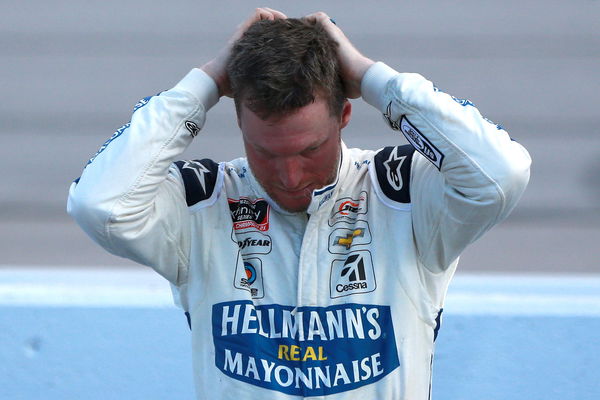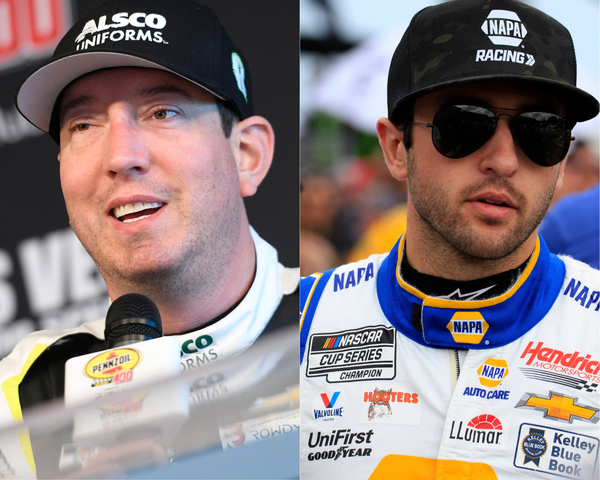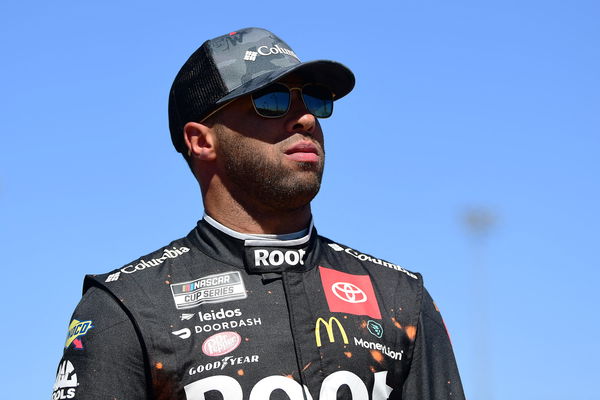Will NASCAR’s Le Mans Adaptation Pose a Threat to Spotters in the Future? Jimmie Johnson & Jordan Taylor Spill the Beans

Follow Us

via Imago
Jimmie Johnson, Garage 56 Chevrolet Camaro, Jordan Taylor | Credits: Imago
In the fast-paced world of motorsports, adaptability is key to staying ahead of the competition. NASCAR, known for its thrilling oval track races, has recently made a bold move by venturing into the realm of endurance racing with its participation in the prestigious 24 Hours of Le Mans.
This transition, however, raises questions about the role of spotters in NASCAR and whether their presence will be threatened in the future. Cup Series legend Jimmie Johnson and IMSA champion Jordan Taylor shed light on this intriguing topic, sharing their experiences and insights from their 285-lap experience in Le Mans.
ADVERTISEMENT
Article continues below this ad
Jordan Taylor talks about Le Mans and the Adaptation Challenge
In the fast-paced world of NASCAR, spotters are the eyes and ears of the drivers. They stand atop the grandstands, equipped with binoculars, state-of-the-art gadgets, and extensive knowledge of the track, guiding the drivers through traffic and alerting them to any potential dangers. This constant communication helps the drivers make split-second decisions to avoid collisions and maintain their positions on the track. It is a vital component of NASCAR racing.
However, when it comes to the 24 Hours of Le Mans, a unique set of challenges emerges. Le Mans, in stark contrast to the typical NASCAR race, takes place on an 8-mile circuit that winds through public roads and incorporates a mix of high-speed straights and challenging corners. In a recent interview with Road Track, Jordan Taylor explains the unique challenges they face at Le Mans, which differ significantly from their experiences in NASCAR.
“In NASCAR, you have spotters,” Taylor explains. “Here, it’s 8 miles, so you can’t have 20 spotters. I’m mainly looking at timing and scoring. We call them the ‘Marching Ants’ as the cars go around the track. With our car, it’s so hard to see when they’re next to you. The marching ants help us let the drivers know what to look out for, then it’s up to them to get through it.”
WATCH THIS STORY: Shaquille O’Neal Left Sonoma Race Winner Dumbfounded After Recalling His Famous race With Dale Earnhardt Jr
Jimmie Johnson appreciates Le Mans technological advancement
ADVERTISEMENT
Article continues below this ad
Trending

“I’m Frustrated”- Despite $400 Million Net Worth Tag, Dale Earnhardt Jr Reveals His Only “Cheaper” NASCAR Miss
May 01, 2024 10:32 AM EDT

Joe Gibbs Racing Warn Rick Hendrick Camp Against Underestimating Desperate Underdogs
April 30, 2024 10:48 PM EDT

Next-Gen Stats Sell Out Richard Childress’ Disgruntled Grandson as Riled Up Fans Beg to Preserve Dale Earnhardt’s Legacy
April 30, 2024 07:55 AM EDT

NASCAR Rumor: Kyle Busch Could Fulfill Shattered Indy 500 Dream as ‘Chase Elliott 2.0’ Triggers Controversial Fallout
April 30, 2024 04:32 AM EDT

NASCAR’s #1 Reporter Defends Decision to Follow Account Creating Racist Attacks Against Bubba Wallace
May 01, 2024 04:44 PM EDT
Get instantly notified of the hottest NASCAR stories via Google! Click on Follow Us and Tap the Blue Star.

Follow Us
While the presence of spotters is limited at Le Mans due to the track’s topology, technological advancements have come to the aid of drivers. Jimmie Johnson in the same interview highlights one such advancement that has proven invaluable—the radar systems installed in cars.
“As faster cars are approaching, a little arrow pops up,” Johnson explains. “First, it’s green, then it’s orange, then it’s red, depending on how close they are. At night, it’s really tough to see with the bright headlights, so you have to pay attention to the arrows. It’s really, really helpful. There are no other mirrors, so you have to completely depend on that. We had some concerns with it, but it’s worked out fine.”
ADVERTISEMENT
Article continues below this ad
As NASCAR continues to explore new racing environments like Le Mans, the role of spotters may face challenges and potential changes. While technology has provided assistance through radar systems, there is still an irreplaceable element of human judgment and communication that spotters bring to the table.

NASCAR World Showers Dale Earnhardt Jr With Utmost Appreciation Over His Racing Venture’s Thrilling Success
Edited by:
Nischal Kandpal
